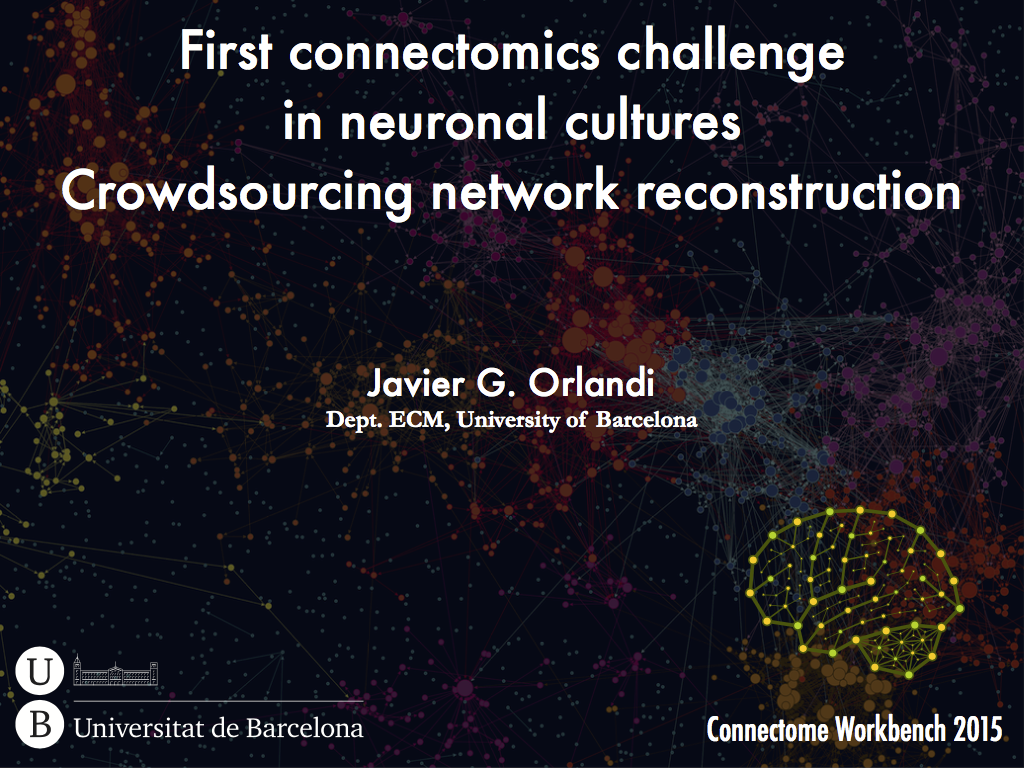Connetome Workbench
Cambridge, United Kingdom. 11-12 September 2015
Abstract:
We have recently run a crowdsourcing challenge to reverse engineer the structure of neuronal networks from the analysis of spontaneous activity in neuronal cultures. Unraveling the connectivity of neuronal circuits involving large numbers of neurons is one of the major challenges neuroscience faces today. Indeed, important advances in the last decade have provided unprecedented level of detail on the structure and function of these circuits. However, the understanding of inter-relations between the observed functional couplings and the underlying neuronal dynamics and circuit structure is still a major problem. Highly controllable experimental platforms, in which results and predictions of different functional connectivity analysis techniques can be reliably tested are needed, and neuronal cultures are inherently good candidates.
Based on our experimental studies in the dynamics of neuronal cultures and network inference techniques, we launched a challenge in the form of an online competition to foster the development of novel connectivity-from-activity inference algorithms, specially targeted to researchers in other disciplines. We generated calcium fluorescence traces from simulated neuronal cultures of different topologies and dynamics and provided the participants with different benchmarks and sample datasets to test their algorithms and predictions on the underlying network structure. Participants were ranked based on the achieved performance against selected competition network instances, without any knowledge of the underlying connectivity. At the end of the challenge, several participants were able to outperform state of the art algorithms, and even reach outstanding reconstructions. Most of the code developed by the participants was released open-source after extensive post-challenge validations and verifications. This allowed us to gather a rich suite of highly diverse algorithms and techniques for network reconstruction, thanks to the collaboration between usually segregated research communities.
